Multichannel marketing is the practice of implementing a marketing strategy across different channels and platforms. If you’re working in digital marketing—or considering a career in the field—you’ll need to be familiar with what multichannel marketing is, why it’s important, and how to effectively run a multichannel marketing strategy.
In this guide, we’ll cover everything you need to know about multichannel marketing. Want to skip ahead to a specific section? Just use the clickable menu:
- What is multichannel marketing? A definition
- Why is multichannel marketing important?
- What are the most important or popular digital marketing channels?
- What are the benefits of multichannel marketing?
- What are the challenges associated with multichannel marketing?
- Real-world examples of multichannel marketing
- How to launch a multichannel marketing strategy
- Key takeaways and next steps
So: What is multichannel marketing? Let’s take a look.
1. What is multichannel marketing? A definition
Here’s a bold statement: Multichannel marketing is arguably one of the most critical strategies marketers can implement today. Multichannel marketing involves sending a unified message through several independent channels to spread the word about a business. These channels can be digital, OOH (out-of-home), for example, billboards or taxi wraps, print, and more. The key thing to understand here is that the more channels on which your brand appears, the greater your chances of the right people seeing your ads.
Along with multichannel marketing, however, there are other equally important strategies that seem very similar on a superficial level, but differ slightly. This includes cross-channel marketing and omnichannel marketing. Let’s explore these now.
What is the difference between multichannel marketing, cross-channel marketing, and omnichannel marketing?
Many people mistakenly use the terms “multichannel,” “cross-channel,” and “omnichannel” marketing interchangeably. While they are similar strategies (they all leverage more than one channel), they possess distinct differences. The main one is that multichannel marketing is brand-centric, whereas cross-channel and omnichannel are customer-centric.
Cross-channel marketing aims to move a customer through the sales funnel to complete a singular goal, like finishing a purchase. For example, a customer may see an ad on Twitter that encourages them to download a whitepaper. Once the customer has given their information in exchange for this document, they receive an email encouraging them to sign up for a product demo and an SMS with a discount offer if they purchase it. In this case, the customer touchpoints happen on multiple channels, but they all act in concert to achieve one goal.
Omnichannel marketing is also customer-centric, but it involves providing a personalized and consistent customer experience at every stage of the funnel. A brand leveraging omnichannel marketing should ensure that all its visuals, messaging, tone/voice, and user interfaces are consistent enough that a customer should barely notice when switching between channels. Think of Amazon’s website versus the app. They have a similar enough interface that if you’re familiar with one, switching to the other should be effortless.
Multichannel marketing, on the other hand, entails the use of different channels for marketing purposes, but not necessarily in a unified or concerted way.

2. Why is multichannel marketing important?
In today’s digital-centric environment, limiting your advertising efforts to a single channel is largely inefficient. Your target audience more than likely spends time on multiple digital platforms; putting all your eggs in one basket, so to speak, will hamper your efforts at lead generation, brand awareness, and sales.
The challenges of reaching customers today
Some people enjoy scrolling through social media or email; others prefer SMS or live chat. The great thing about multichannel marketing is that no matter where a customer chooses to spend time online, your brand will be there.
When crafting your multichannel strategy, make sure your messaging makes sense for the platform. For example, social media may be perfect for a top-of-funnel video about your product because people tend to passively consume content, but SMS might be a better choice to send a notice about a flash sale to people who are closer to the purchase phase.
There are plenty of options to choose from if you’re going to engage in multichannel marketing, but (depending on your audience) digital platforms often provide better ROI (return on investment) over traditional channels like broadcast television and print. Let’s explore some of the most common channels now.
3. The top digital marketing channels
Most people today spend an average of almost seven hours online per day. They check their email, scroll through social media, stream shows, and peruse websites. A multichannel marketing strategy will enable your brand to advertise to them on all these channels. Here are the most common to consider including:
- Social media: Platforms such as Instagram, Facebook, Twitter, LinkedIn, etc. offer different opportunities for ad placement and in-app shopping
- Paid search: A (virtually) guaranteed spot on the search engine results pages (SERPs) to attract new and returning customers
- SEO (search engine optimization): Optimizing your website and content to rank organically (i.e. without paying) for top terms whenever people search for related terms online.
- SMS: Text message marketing that’s hard to ignore.
- Email: An ideal channel for sending tailored messaging to your audience with a stellar ROI ($36 for every $1 you put in!)
- Live chat and chatbots: Human or AI-powered software on social media platforms and your website that offer immediate customer service.
No matter how many channels you choose to advertise on, you’ll still need a cohesive digital marketing strategy to ensure your efforts pay off (more on this later). You can learn about the main marketing channels in more detail here.

4. The benefits of multichannel marketing
With all the challenges facing marketers in reaching their target audiences, multichannel marketing is a great tool to have in your toolkit. Here are some of its wide-reaching benefits:
- Amplified reach: Not all your potential customers will see your ads, no matter how many channels you use for promotion, but the more channels you advertise on, the more your odds of catching people’s attention improve.
- Boosted engagement: Repetition breeds familiarity, and the more you expose people to your advertising, the greater the chance they’ll engage.
- Ease of connection: Your best bet is to reach your audience where they are most comfortable (e.g. SMS, social media, live chat, etc.) and a multichannel marketing strategy allows you to do so.
- Diverse content options: Taking advantage of several marketing channels enables you to publish different types of content, such as videos, blog posts, downloadable whitepapers, or other documents, which may appeal to varied audiences.
Those are some of the benefits. Now for the challenges…
5. Multichannel marketing challenges
Even with all the benefits, multichannel marketing is not without its challenges. Here are a few you may encounter:
More channels require more oversight
If you market and advertise on multiple channels, you’ll need to spend more time setting up ads, monitoring them, and determining the ROI. While this may take some getting used to, it’s worth the investment.
Attribution can be tricky
When you advertise on one channel, it’s easy to tell where your sales or leads came from. With multiple channels, attribution gets a little murkier. Not only that, but most customers will encounter several brand touchpoints before they convert. However, you can use tools like UTMs and link trackers like Clickmagick to help identify which channels are the most effective for your brand.
Many channels to choose from
Even Fortune 500 brands don’t have unlimited marketing budgets. If you’re a small business, it’s likely you don’t either! Given the vast number of marketing channels you could advertise on, it can be overwhelming to narrow down your choices to fit your budget.
In this case, experimenting is your best friend. Determine a budget, allocate money to a few different platforms, then test them out and document your results. You can start advertising on social media and paid search on a shoestring budget (provided you aren’t competing for top search terms like “payday loans”) and use free versions of email providers like Mailchimp for testing purposes.
Despite its challenges, the benefits of multichannel marketing clearly outweigh the potential hurdles. Next, let’s look at examples of multichannel marketing to inspire you to get started!

6. Real-world examples of multichannel marketing
Thousands of brands have embraced multichannel marketing to boost their sales, improve customer engagement, and increase brand awareness. Here are some examples of brands doing it well:
Multichannel marketing example: CVS
CVS has combined print advertising (both in-store and in magazines) with digital email communications for its multichannel marketing strategy. Its target audience is massive—anyone in the U.S. could use at least a few of its products—and it casts a wide net to boost brand awareness and sales.
The print ads generically highlight its makeup offerings while the email specifically targets shoppers who participate in its loyalty program. The circular is available both in digital and printed format (the former is accessible through the CVS website, the latter is found in the brick-and-mortar locations).
Notice how the branding is consistent: CVS utilizes its trademark red color and chunky sans serif font in each communication.
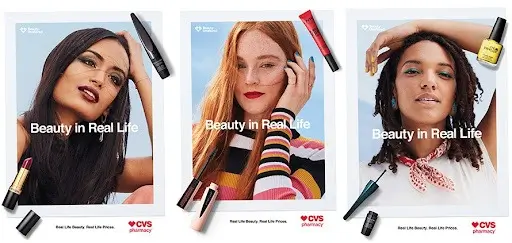
Example of a CVS print ad
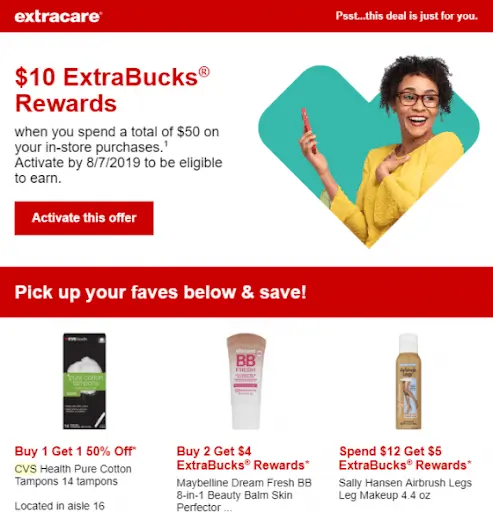
Example of a CVS email
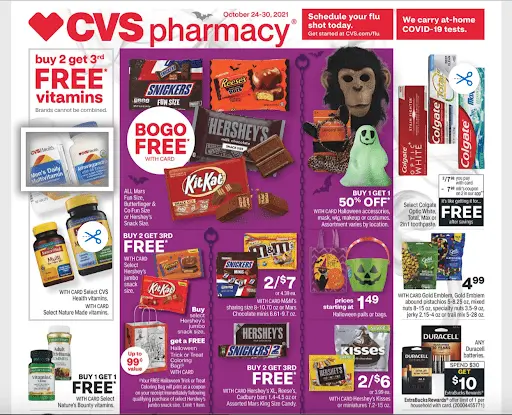
CVS printed circular
Multichannel marketing example: Grammarly
Grammarly has put significant resources into video ads on YouTube, display advertising, and emails, all the while ensuring that the messaging and aesthetics are on-brand. The video ad demonstrates how Grammarly works, and the other content supports the same message. If you click on the content, you’ll head to Grammarly’s website, where you can find out more about the product and watch another video.
Notice how Grammarly’s distinctive green (which also matches its website) appears in the image ads; the yellow highlight over the words also shows up in both the video and the email image.

Grammarly display ad
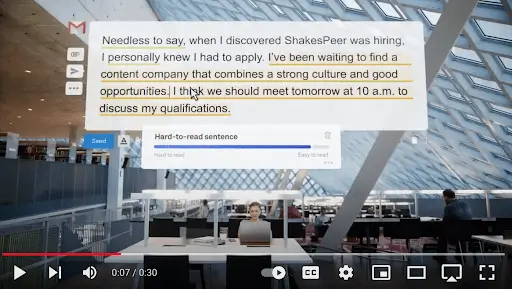
Grammarly video ad
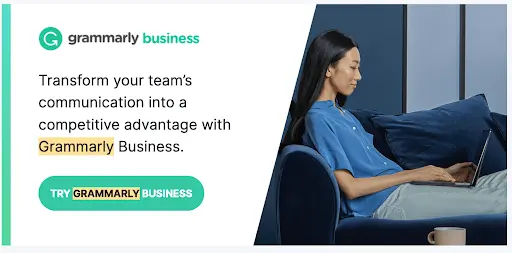
Grammarly email
With these examples to inspire you, let’s take a look at the steps involved in executing a multichannel marketing strategy.
7. How to launch a successful multichannel marketing strategy
It may take a little more effort to launch and execute a multichannel marketing strategy, but if you take it one step at a time, you’ll be on the right path to success! Here are some guidelines for building a multichannel marketing strategy:
1. Establish your goals
You won’t be able to measure the success of any marketing campaign, multichannel or otherwise, if you don’t first determine what will signify success. Do you want to increase sales or leads by X% or generate a lift in brand awareness? Maybe you are looking to increase website traffic or acquire new contacts. Just document whatever you want to achieve (and how you’ll measure it) so you’ll be able to compare the results against your goals.
2. Identify your target market
Before you can choose what channels to advertise on, you’ll need to know who you are targeting. Once you have a few buyer personas, research where they hang out online (or in the real world) and are most likely to see your ads.
3. Choose your marketing mix
Thanks to your buyer persona research, you now know what platforms appeal most to your target audience. Now it’s time to narrow down your choices based on your business goals (e.g., brand awareness, lead gen, sales, etc.). Not all platforms are ideal for every business goal, and some can be more expensive than others. However, keep in mind that nothing is set in stone; if a channel is underperforming, you can always swap it out for another one.
4. Craft your messaging and content
Your communication will depend on your business goals as well. If you’re targeting current customers to get them to repurchase, there’s no need to explain what you sell. For businesses with products that need a lot of explanation, videos on YouTube and social media can work wonders.
5. Launch, monitor, evaluate, and repeat
Even if you feel like you hit on an incredible mix the first time around, there’s always room for improvement. And don’t let things run on autopilot! Analyze which channels have the best ROI, and don’t be afraid to accept a sunk cost if a few of them turn out to be duds.
Want to learn more about marketing metrics and how to devise a marketing campaign? Check out our free digital marketing for beginners short course.
8. Key takeaways and next steps
As competition for audience attention continues to increase, savvy brands (and marketers!) that embrace a multi-faceted marketing strategy will come out on top. These days, it’s no longer enough to pop an advertisement on a billboard or publish some paid social media posts to generate the returns marketers crave. Multichannel marketing is here to stay—are you ready to run with it?
If you’d like to learn more about digital marketing, why not try out this free, self-paced short course?
You may also be interested in these guides:
